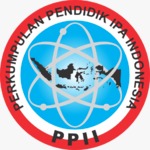Penentuan Asumsi Waktu Berakhirnya Gempa Susulan Studi Kasus Gempabumi Lombok 5 Agustus 2018
DOI:
https://doi.org/10.29408/kpj.v3i2.1609Keywords:
Omori, Mogi I, Mogi II, Utsu, aftershocks, Lombok EarthquakeAbstract
Indonesia is located at the meeting point of three active tectonic plates. The consequence is the country is very prone to earthquake disaster, one of the most devastated events is Lombok earthquake occurred on 5 August 2018. The aim of this study is to estimated ending time of aftershock using Omori, Mogi I, Mogi II, and Utsu method. Based on the result of Mogi I and Utsu method which has the correlation coefficient closest to -1 it is predicted that aftershock will stop on 96th weeks after the mainshock. By calculating the time data obtained, it is predicted that the aftershock will stop on the first week of June 2020.References
Awaludin, Adang. (2011). Penentuan Waktu Berakhirnya Gempa Susulan Untuk Gempa Bumi Biak 16 Juni 2010. SKRIPSI. Universitas Islam Negeri Syarif Hidayatullah Jakarta.
Liputan6.com. (2018). BMKG: Gempa Lombok 7 SR adalah yang utama, http://www.liputan6.com/news/read/3610564/bmkg-gempa-lombok-7-sr-adalah-yang-utama [diakses pada tanggal 14 November 2018]
R, A. Wirma Sari., Jasruddin., Ihsan, Nasrul. (2012). Analisis Rekahan Gempa Bumi dan Gempa Bumi Susulan dengan menggunakan Metode Omori. Jurnal Sains dan Pendidikan Fisika, Jilid 8 No.3. Universitas Negeri Makassar. Makassar. 263-268
Sunarjo. Gunawan, M.Taufik., Pribadi, Sugeng.(2012). Gempabumi Edisi Populer. Badan Meteorologi Klimatologi dan Geofisika. Jakarta.








